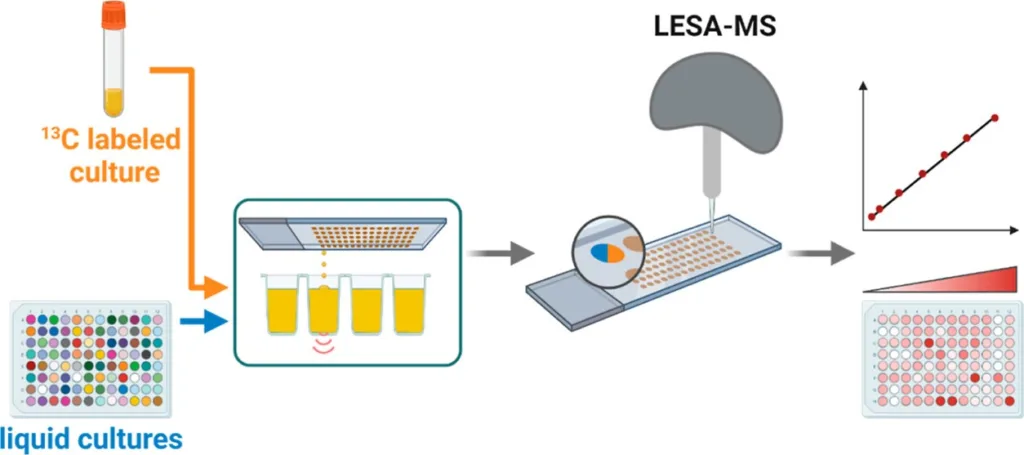Mass Spectrometry-Based High-Throughput Quantification of Bioproducts in Liquid Culture
Themes: Conversion
Keywords: Mass Spectrometry, Metabolomics
Citation
Zhou, S., Sweedler, J.V. Mar. 6, 2023. Data for “Mass Spectrometry-Based High-Throughput Quantification of Bioproducts in Liquid Culture.” University of Illinois Urbana-Champaign. DOI: 10.13012/B2IDB-5344291_V1.
Overview

To meet the ever-increasing need for high-throughput screening in metabolic engineering, information-rich, fast screening methods are needed. Mass spectrometry (MS) provides an efficient and general approach for metabolite screening and offers the capability of characterizing a broad range of analytes in a label-free manner, but often requires a range of sample clean-up and extraction steps. Liquid extraction surface analysis (LESA) coupled MS is an image-guided MS surface analysis approach that directly samples and introduces metabolites from a surface to MS. Here, we combined the advantages of LESA–MS and an acoustic liquid handler with stable isotope-labeled internal standards. This approach provides absolute quantitation of target chemicals from liquid culture-dried droplets and enables high-throughput quantitative screening for microbial metabolites. In this study, LESA–MS was successfully applied to quantify several different metabolites (itaconic acid, triacetic acid lactone, and palmitic acid) from different yeast strains in different mediums, demonstrating its versatility, accuracy, and efficiency across a range of microbial engineering applications.
Data
Illinois Data Bank — Includes mass spectrometry and gas chromatography
- Quantitation Parameters
- IA/TAL/Palmitic Acid Plotting Data and Precision Recovery
- Strains